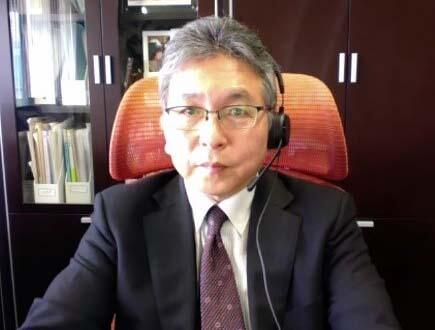Giant congenital melanocytic nevus is a condition in in which large, pigmented nevi are present from birth, which, when left untreated, cause skin cancer in a small percentage of cases. While skin grafts are useful in treating this condition, large nevi often cannot be entirely covered by grafts from one's own skin. Although autologous cultured epidermis has been covered by insurance since 2016, if the dermis is not present at the graft site, they often do not take.
A research group consisting of Professor Naoki Morimoto of the Graduate School of Medicine, Kyoto University; Tetsuji Yamaoka, Director of the Department of Biomedical Engineering, National Cardiovascular Research Center; and Professor Kenji Kusumoto of the Kansai Medical University has developed a new treatment method. It is called a "complete skin recycling treatment" that reconstructs the dermis using the nevus tissue itself after using high-pressure treatment to kill all cells in the nevus tissue. A clinical study of 10 patients confirmed that the skin could be regenerated, and the nevus did not recur. The researchers will also start a doctor-initiated clinical trial aimed at approving medical devices and achieving insurance approval for the hyperbaric cell-killing device used in the treatment. Their findings were published in Plastic and Reconstructive Surgery.
The only current treatment for giant congenital pigmented nevus is removal of the entire layer of the nevus skin and, in some cases, even the subcutaneous fat layer. This means that the skin defect caused by excision can only be reconstructed using perinatal cells developed by skin grafting or a tissue dilator. However, the cost of skin sampling is large, and functional and visual problems occur. Compounding these issues, it is necessary to repeat the operation multiple times, which causes the patients to endure major mental and physical suffering.
Despite all this, there are several cases of recurrence due to difficulty in completely excising the nevus tissue and cells. If the nevus is large, it cannot be reconstructed because of insufficient skin available for transplantation.
In 2016, the giant congenital melanocytic nevus was covered by insurance for treatment using the autologous cultured epidermis, JACE; however, the dermis cannot be reconstructed with the autologous epidermis. The superficial layer of the nevus is removed and the autologous cultured epidermis grafts are added; however, nevus cells remain, leading to melanoma risk. On the other hand, scar formation may occur because the autologous cultured epidermis does not engraft when the full thickness of the nevus is excised. In response to these issues, the research group constructed a novel therapy in which all nevus cells were treated with high pressure to inactivate them and then reused for autologous dermis regeneration.
When a pressure of 200 megapascals is applied to the nevus tissue in water for 10 minutes, all the cells die, but the extracellular matrix, which is composed of proteins, remains. During the actual operation, the nevus is sutured to the original site, and the dermis side is shaved to 0.5-millimeter thickness; after the high-pressure treatment, the nevus is re-implanted as an autologous dermis. As the residue of the cells that died is degraded and absorbed over 1−2 weeks, a second operation is performed, and autologous cultured epidermis is transplanted. As a result, blood vessels and fibroblasts enter the subcutaneous tissue and autologous cultured epidermis engraft.
A clinical trial of 10 subjects was conducted between February 2016 and August 2018 at Kansai Medical University Hospital. Follow-up at 1-year post-surgery confirmed that one patient dropped out in the middle of the study; in the remaining nine patients, there was no residual nevus tissue and the black color gradually disappeared. On the other hand, contracture and hypertrophic scars of the reconstructed skin were strongly observed until approximately half a year after the operation; however, the skin defects after nevus resection can be treated. Similarly, in the field of orthopedics, there is a technique used for reconstruction of one's own bone after performing a cell-killing treatment in which the excised bone is soaked in liquid nitrogen for 20 minutes to remove a malignant tumor. This technique has been covered by insurance since 2019. Professor Morimoto said, "For the time being, we are conducting clinical trials with the aim of approving medical devices for high-pressure processing equipment using this method. In the future, we would like to apply high-pressure inactivation treatment to tissues lost due to malignant tumors of the head and neck, malignant tumors of the gastrointestinal tract, and breast cancer."

Credit: Kyoto University
This article has been translated by JST with permission from The Science News Ltd.(https://sci-news.co.jp/). Unauthorized reproduction of the article and photographs is prohibited.




